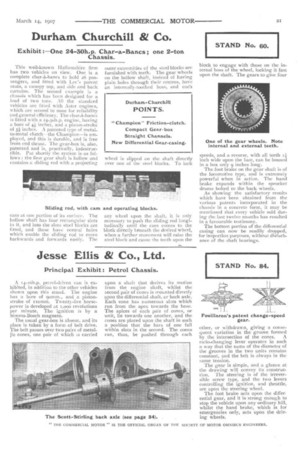Jesse Ellis & Co., Ltd.
Page 21

If you've noticed an error in this article please click here to report it so we can fix it.
Principal Exhibit : Petrol Chassis.
A e4-itih.p. petrel-driven van is exhibited, in addition to the other vehicles shown upon this stand. The engine has a bore of 9ornm., and a pistonstroke of iTo mm. Twenty-five horsepower is developed at 1,000 revolutions per minute. The ignition is by a Simms-Bosch magneto.
The usual gear-box is absent, and its place is taken by a form of belt drive. The belt passes over two pairs of metallic cones, one pair of which is carried upon a shaft that derives its motion from the engine shaft, whilst the second pair of cones is mounted directly upon the differential shaft, or back axle. Each cone has numerous slots which run from the apex towards the base. The apices of each pair of cones, or unit, lie towards one another, and the cones are placed upon the shaft in such a position that the bars of one fall within slots in the second_ The cones can, thus, be pushed through each other, or withdrawn, giving a consequent variation in the groove formed by the intersection of the cones. A ratio-changing lever operates in such a way that the sums of the diameter of the grooves in the two units remains constant, and the belt is always in the same tension.
The gear is simple, and a glance at the drawing will convey its construction. The steering is of the irreversible screw type, and the two levers controlling the ignition, and throttle, are upon the steering wheel. The foot brake acts upon the differential gear, and it is strong enough to stop the vehicle upon any ordinary hill, whilst the hand brake, which is for emergencies only, acts upon the driving wheels.
































































